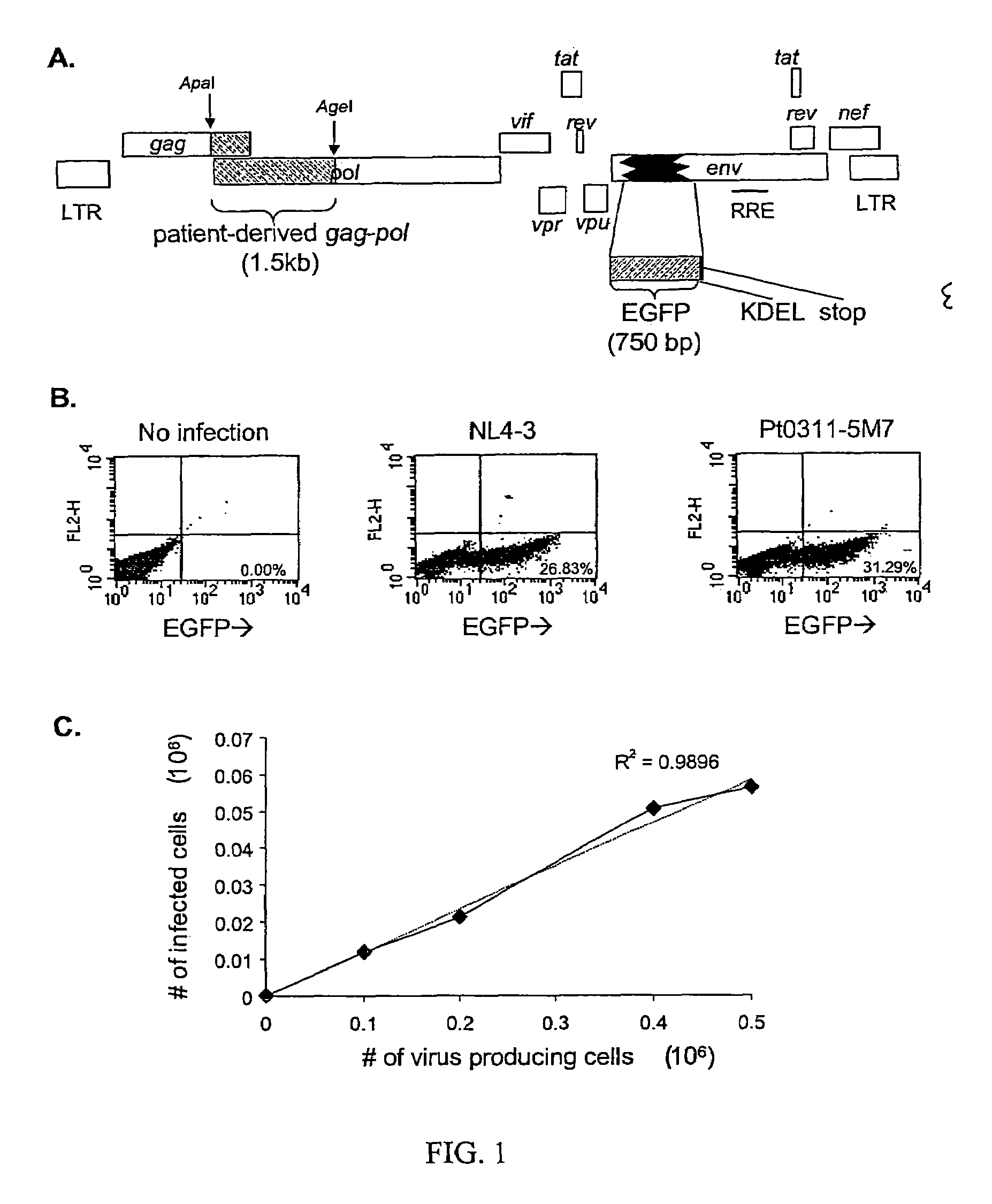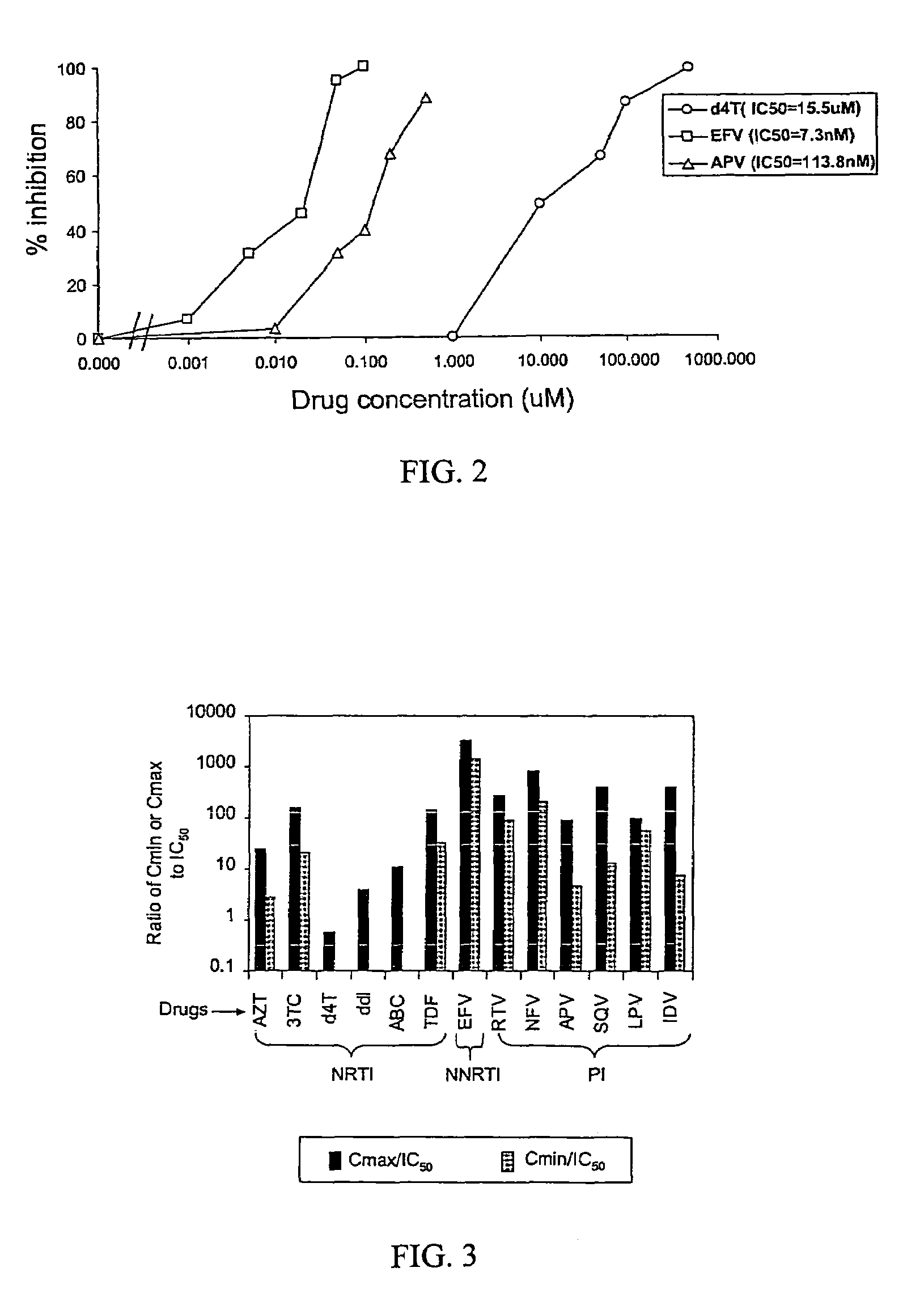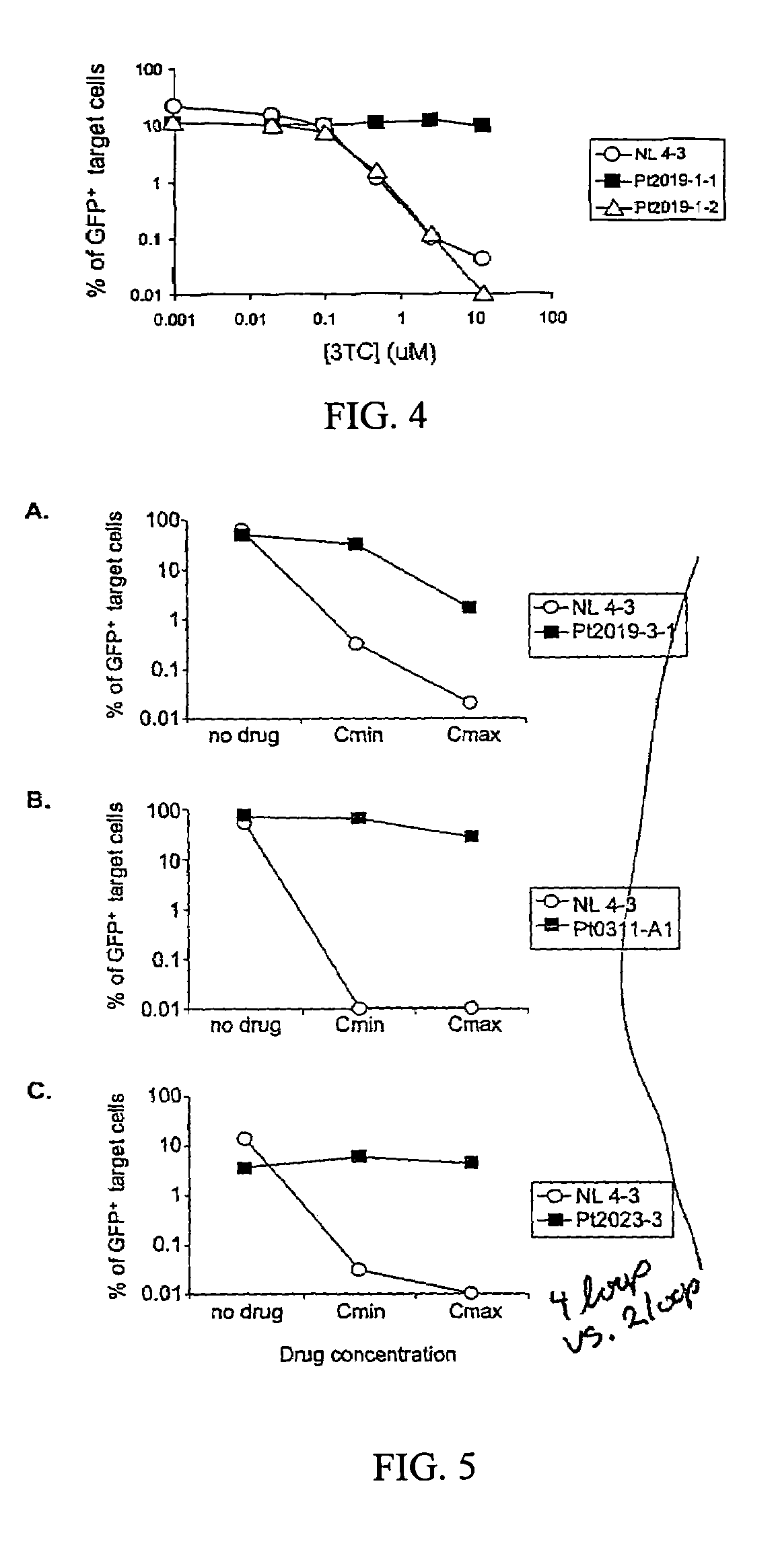Single cell analysis of HIV replication capacity and drug resistance
a single cell and hiv technology, applied in the field of medical treatment, can solve the problems of no known cure for aids, and serious damage to defense systems
- Summary
- Abstract
- Description
- Claims
- Application Information
AI Technical Summary
Benefits of technology
Problems solved by technology
Method used
Image
Examples
example 1
[0088]Production and characterization of a recombinant HIV-1 vector for single-cell phenotypic analysis. A portion of the env gene of the pNL4-3 proviral clone was replaced with an inframe insert encoding an enhanced form of GFP followed by in-frame codons for a KDEL (SEQ ID NO: 14) ER retention signal (Munro, et al., 1987) and a stop codon (FIG. 1A). The resulting vector, pNL4-3-DE-GFP, expresses an Env-GFP fusion protein that is translocated into the ER and retained there, resulting in the accumulation of high levels of intracellular GFP. The expression of GFP fused to a virion structural protein under transcriptional control of the HIV-1 long terminal repeat allowed a high level of expression in infected cells.
[0089]After cotransfection of 293T cells with the Env-negative pNL4-3-DE-GFP vector and a construct encoding VSV-G, VSV-G-pseudotyped HIV-1 virions were harvested and used to infect cells of the CD4+ human T-cell Jurkat line in single round infections. FIG. 1B shows the res...
example 2
[0090]Measurement of replication capacity. In order to compare the replication capacities of viruses with different gag-pol sequences, it was necessary to normalize viral stocks to control for differences in transfection efficiency. Transfection supernatants could not be normalized based on p24 levels in the supernatants since virus release is influenced by protease (Kaplan, et al., 1994) and since Gag cleavage to generate p24 is dependent on protease activity and can be influenced by protease mutations (Zennou, et al., 1998). Similarly, RT assays could not be used since drug resistance mutations in RT can reduce the function of the enzyme (Back, et al., 1996).
[0091]Stocks of pseudotyped virus were normalized based on the number of transfected cells, as determined by GFP expression. GFP expression was measured in an aliquot of transfected 293T cells to determine how many cells were successfully transfected with the vectors and were capable of expressing viral genes and thus producin...
example 3
[0093]Effective concentration and estimated in vivo potency for individual drugs. To demonstrate the usefulness of this phenotypic assay for measuring the inhibition of viral replication by antiretroviral drugs, the concentrations of protease and RT inhibitors needed to inhibit the replication of the reference wild-type NL4-3 clone in this system were determined by drug titration. In order to make the system mimic in vivo conditions as closely as possible, assays with 50% human serum to account for the propensity of some antiretroviral drugs to bind to plasma proteins were performed.
[0094]PIs were added 4 h after transfection and were maintained in the culture during virus production and maturation and the infection of target cells. Target cells were preincubated with NRTIs for 16 h to allow these drugs to be converted to active triphosphate forms via intracellular phosphorylation. Longer preincubation times (24 h) did not further increase the inhibition by NRTIs. NRTIs, PIs, and NN...
PUM
| Property | Measurement | Unit |
|---|---|---|
| molar ratio | aaaaa | aaaaa |
| fluorescent | aaaaa | aaaaa |
| fluorescent protein | aaaaa | aaaaa |
Abstract
Description
Claims
Application Information
 Login to View More
Login to View More - R&D
- Intellectual Property
- Life Sciences
- Materials
- Tech Scout
- Unparalleled Data Quality
- Higher Quality Content
- 60% Fewer Hallucinations
Browse by: Latest US Patents, China's latest patents, Technical Efficacy Thesaurus, Application Domain, Technology Topic, Popular Technical Reports.
© 2025 PatSnap. All rights reserved.Legal|Privacy policy|Modern Slavery Act Transparency Statement|Sitemap|About US| Contact US: help@patsnap.com



